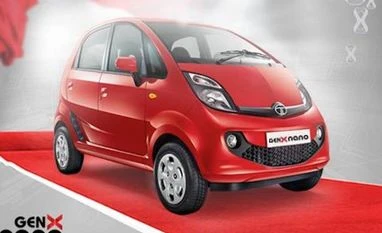The company, which is expected to launch the GenX Nano soon, had developed a two-cylinder 800-cc diesel engine that was also aimed at powering the small car, but it has decided against using it for the time being.
"The reason is that as we stand now, refinement is a challenge and what refinement can be given on this kind of a car (Nano) won't be acceptable to the Indian customer," Tata Motors senior vice-president (programme, planning and project management, passenger vehicles) Girish Wagh told PTI. "We need to do significant amount of work on improving the refinement," he added.
Wagh said from an economics point of view of both customers and the manufacturer at the current market price of the fuel, odds are heavily against the diesel Nano.
"Economics is also a challenge... When diesel price comes to its natural level, all the price advantage will go.
Although it has higher fuel efficiency, meeting higher emission norms in diesel is more costly... Therefore, below a particular price level, diesel making economic sense both for the customer and the OEM is very difficult," Wagh said.
Elaborating on the technical hurdles, he said: "One of the challenges on diesel engine is refinement. We did develop a 2-cylinder 800 cc diesel engine, which was also used in our commercial vehicle family.
"We assessed the NVH (noise, vibration and harshness) level of this engine and how it will perform on the car. We thought that the kind of refinement levels that the (car) customers are now expecting, they won't accept the refinement which the 2-cylinder diesel can produce." When asked if the company has given up on a diesel Nano, Wagh said: "We continue to work on it. We don't rule out any possibility but currently the refinement and economics for both the customer and the OEM is a challenge." In order to revive the fortunes of what Ratan Tata called 'People's Car', Tata Motors is all set to unveil its new avatar, GenX Nano, positioning it as an aspirational vehicle.
The company is doing so by offering all the functional needs like power steering, openable boot, automatic transmission for city driving and also providing a bigger fuel tank of 24 litres as compared to just 15 litres in the previous version.
You’ve reached your limit of {{free_limit}} free articles this month.
Subscribe now for unlimited access.
Already subscribed? Log in
Subscribe to read the full story →

Smart Quarterly
₹900
3 Months
₹300/Month
Smart Essential
₹2,700
1 Year
₹225/Month
Super Saver
₹3,900
2 Years
₹162/Month
Renews automatically, cancel anytime
Here’s what’s included in our digital subscription plans
Exclusive premium stories online
Over 30 premium stories daily, handpicked by our editors


Complimentary Access to The New York Times
News, Games, Cooking, Audio, Wirecutter & The Athletic
Business Standard Epaper
Digital replica of our daily newspaper — with options to read, save, and share


Curated Newsletters
Insights on markets, finance, politics, tech, and more delivered to your inbox
Market Analysis & Investment Insights
In-depth market analysis & insights with access to The Smart Investor


Archives
Repository of articles and publications dating back to 1997
Ad-free Reading
Uninterrupted reading experience with no advertisements


Seamless Access Across All Devices
Access Business Standard across devices — mobile, tablet, or PC, via web or app
)

